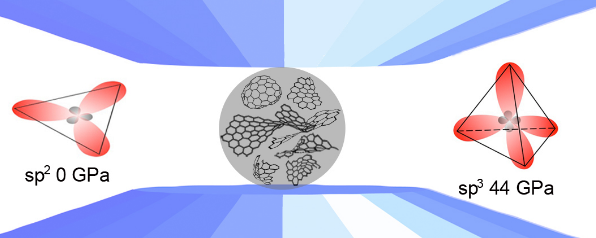New form of superhard carbon observed
October 12, 2011

Amorphous diamond (credit: Carnegie Institution of Washington)
Scientists at Carnegie’s Geophysical Laboratory and associates have discovered a new form of carbon capable of withstanding extreme pressure stresses previously observed only in diamond.
The experiment started with a form of carbon called glassy carbon, first synthesized in the 1950s, that combines desirable properties of glasses and ceramics with those of graphite. The team created the new carbon allotrope (form) by compressing glassy carbon to above 400,000 times normal atmospheric pressure.
This new carbon form was capable of withstanding 1.3 million times normal atmospheric pressure in one direction while confined under a pressure of 600,000 times atmospheric levels in other directions. No substance other than diamond has been observed to withstand this type of pressure stress.
However, unlike diamond and other crystalline forms of carbon, the structure of this new material is not organized in repeating atomic units. It is an amorphous material, meaning that its structure lacks the long-range order of crystals. This amorphous, superhard carbon allotrope would have a potential advantage over diamond if its hardness turns out to be isotropic (equally strong in all directions). In contrast, diamond’s hardness is highly dependent upon the direction in which the crystal is oriented.
“These findings open up possibilities for potential applications, including super-hard anvils for high-pressure research and could lead to new classes of ultradense and strong materials,” said Russell Hemley, director of Carnegie’s Geophysical Laboratory.
Ref.: Yu Lin, et al., Amorphous diamond: A high-pressure superhard carbon allotrope, Physical Review Letters, 2011; (in press)